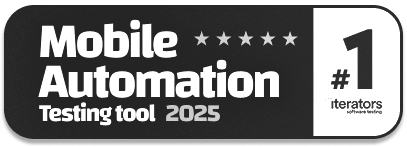What is Infrastructure as Code (IaC)?
|
|
Gone are the days of racking servers, SSH-ing into machines, and running setup scripts manually. Today, infrastructure is programmable, and at the center of that change is Infrastructure as Code (IaC).
IaC is changing the way we provision, manage, and scale infrastructure. It’s like writing software code, not to create an app but to manage the very servers and environments in which those apps run. So, let’s see why IaC is crucial in the contemporary DevOps toolbox.
What is Infrastructure as Code?
Infrastructure as Code (IaC) is a process of managing and provisioning computer data centers and cloud infrastructure using machine-readable scripts or configuration files instead of manual processes. It handles infrastructure (networks, servers, databases, etc) like it handles software code by writing it, testing it, and deploying it using automation tools.
A Brief History: From Physical Servers to IaC
Let’s look into the history, where it all started, from physical servers to IaC.
- Pre-Cloud Era: Infrastructure setup was entirely manual, before the cloud. IT teams spent physically racking servers, booting operating systems from disks, and configuring each machine one at a time. It was a slow, error-prone, and difficult-to-scale process.
- Virtualization Era: Then came virtualization, tools like VMware and Hyper-V, enabling multiple virtual machines to run on a single physical server. This led to better hardware utilization and reduced provisioning times. However, configurations were still manual-heavy.
- Cloud Era: AWS, Azure, and GCP made infrastructure programmable through cloud APIs. Teams could now spin up servers, databases, and networks as needed, without purchasing hardware. Provisioning was getting faster, but automation needed manual oversight and custom scripting.
- IaC Era: Infrastructure as code (IaC) permitted teams to describe infrastructure with code, making it version-controlled, repeatable, and capable of automation. Declarative configurations and smooth deployments were possible with tools such as Terraform or CloudFormation. This applied software engineering practices to infrastructure management.
IaC Meaning
To understand the power of IaC, we need to start with a few fundamental principles that shape modern infrastructure building and management:
- Idempotency: This refers to the property that makes sure that running the same IaC script multiple times has the same end result every single time. This prevents configuration drift and unexpected side effects, with reliable and predictable changes to your infrastructure.
- Immutability: The principle of immutability promotes the replacement of infrastructure instead of modification. When a server or service requires a change, it is rebuilt from the bottom using updated code, which limits the chances of mistakes and unknown state problems.
- Version Control: Infrastructure is treated like application code, tracked, and stored in version control systems like Git. It enables teams to review changes, roll back if necessary, and collaborate more efficiently via pull requests and commit history.
- Automation First: With IaC, the goal is to automate everything that can be automated with respect to infrastructure and to avoid manual configuration through user interfaces. From provisioning servers to updating network settings, it’s all done through code and scripts, saving time, and reducing human error.
Benefits of having IaC
Infrastructure as Code is more than a trend. It transforms how teams build, run, and scale environments. Let’s look into the benefits of using IaC.
- Consistency: IaC guarantees that all environments, across the spectrum from development to production, are set up to the very same specification. That takes care of the classic “it works on my machine” problem and avoids environment drift.
- Speed & Agility: Provision servers, databases, and echo application stacks in minutes with reusable code. Things like spinning up test environments can be automated and executed in seconds instead of days, which ultimately improves deployment time and team productivity.
- Scalability: Want more capacity or to deploy in another region? With IaC, changing a few lines of code is enough to upgrade services, replicate environments, or spread infrastructure across the globe. Read: Scalability Testing: Automating for Performance and Growth.
- Cost Savings: IaC helps to minimize operational overhead by reducing manual work and human error. Automated deployments reduce downtime and allow DevOps engineers to spend time on higher-impact work.
- Easy Rollbacks: Have you changed something that broke something? Not a problem, just roll back to a prior Git commit. IaC allows you to regain stable infrastructure configurations when disaster strikes in a rapid and secure manner.
IaC Configuration Approaches
IaC can be configured either by declarative or imperative approaches. These two models define how infrastructure is described and managed. Let’s understand more about these two approaches.
Declarative IaC
The declarative approach focuses on what the infrastructure should look like rather than describing how to achieve it. You specify the end state you want (“I want 3 servers running with a load balancer”), and the tool takes care of how to get there.
- State-driven: The tool compares the desired state with the current state and makes just the changes needed.
- Easier to maintain and scale: You don’t care about the order of commands, just describe your goals using the system.
- Examples: Terraform, AWS CloudFormation
Think of it like saying, “I want a cake,” and the bakery figures out the recipe and baking process.
Imperative IaC
In the imperative approach, you need to tell how to build the infrastructure step by step. You have authority over the execution order, specifying every activity that should occur in the proper order.
- Command-driven: Each instruction is executed in the order written.
- More flexibility: Useful when you need fine-grained control over the provisioning process.
- Examples: Ansible (partly), Shell scripts
It’s like giving someone a cake recipe and telling them to follow each step exactly.
| Feature | Declarative | Imperative |
|---|---|---|
| Focus | Desired end state | Step-by-step instructions |
| Control | Less manual control, more automation | Full control over execution flow |
| Maintenance | Easier to maintain and scale | Can become complex with scale |
| Examples | Terraform, CloudFormation | Ansible (partial), Shell scripts |
How IaC Works
Infrastructure as Code transforms how you set up and manage infrastructure by using code-based automation. Here’s a simplified breakdown of the entire lifecycle:
Write the Code
Begin writing code that defines the infrastructure components you require: virtual machines, networks, databases, security groups, etc. The code is usually written in a specific language or format depending on the tool being used (e.g., YAML, HCL, JSON for Terraform, CloudFormation, etc).
Version Control
Use Git to store your infrastructure code. This lets you view changes over time, audit who updated what, and work with your team with pull requests and code reviews. Read: How to Do Version Controlling in Test Automation.
Execute the Code
Parse the code and invoke the respective API calls to cloud providers using an IaC tool such as Terraform, Pulumi, or CloudFormation. The tool ensures that the resources described in the code are created or updated.
Manage State
The IaC tool keeps the current infrastructure it has deployed ( this is called the “state” ). Then, it utilizes this to determine what changes need to be applied the next time you run your code so that you reach the desired state.
Update Infrastructure
If any changes have been made to the code, re-running it only applies the deltas. This way, your live infrastructure is always up to date and in sync with the configuration as described in the code, in an incremental fashion.
IaC in DevOps and CI/CD
Infrastructure as Code (IaC) is a core enabler of modern DevOps and CI/CD practices, making infrastructure management faster, more reliable, and fully automated.
- Environment Provisioning: IaC is capable of automatically creating the dev, test, staging, and production environments as part of the CI/CD process. This means you can guarantee consistency across the various stages of development, and you don’t have to do this manually.
- Repeatable Builds: IaC enables infrastructure provisioning to be packaged into every build pipeline, ensuring identical environments are created at all times. That repeatability removes drift and makes deployments more predictable and reliable.
- Testing Infrastructure: Infrastructure code can be tested just like your application code. Terratest, KitchenCI and InSpec are examples of tools that help ensure your infrastructure is working correctly before deploying it. Read: What is a Test Environment? A Quick-Start Guide.
- Rollback: IaC provides the ability to roll back to a prior known-good state in case something goes wrong, by using version management. You just roll back a Git commit and redeploy the infrastructure to bring the system back into a normal state.
Version Control and IaC
Just like application code, Infrastructure as Code (IaC) benefits greatly from being managed in a version control system like Git. This practice introduces structure, traceability, and collaboration to infrastructure management.
- Branching and Merging: Version control allows you to safely create branches for testing infrastructure changes without impacting the primary code base. Once verified, those changes can then be merged into the main configuration, promoting safe experimentation and smoother integration.
- Pull Requests and Reviews: Teams can create pull requests for any change before modifications are applied to live infrastructure. This enables peer feedback, compliance checks, and better collaboration, minimizing the chances of errors.
- History and Auditing: Every change is captured, with detail on who made it, when and why. This results in an extensive, easily accessible audit trail that helps teams understand why certain decisions were taken and rectify issues that come up quickly.
- Tagging and Releases: Version control allows tagging specific states of infrastructure, tied to application releases. This helps to always recreate the same environment associated with a specific software version, which enhances deployment consistency.
IaC and Cloud Computing
Infrastructure as Code is a natural fit for cloud environments, where resources are virtual, dynamic, and controlled through APIs. Together, they power fast, scalable, and reliable deployments.
- Multi-cloud Support: Many IaC tools, such as Terraform, are cloud agnostic; they can provision infrastructure for AWS, Azure, Google Cloud, etc. This allows teams to create multi-cloud or hybrid cloud architectures from a single codebase.
- API-Driven Architecture: Infrastructure functionality is exposed via APIs by cloud platforms. IaC tools communicate directly with these APIs to create, update, and define resources like servers, databases, and load balancers, all via code.
- Elasticity and Autoscaling: IaC can contain rules for scaling infrastructure based on demand. This means that you can set auto-scaling groups, load balancers, and capacity limits directly in your code, allowing you to have responsive and cost-efficient deployments.
- Serverless and Containers: IaC not only applies to older infrastructure; it also supports newer technologies such as Kubernetes, Docker and Serverless (FaaS) platforms. The same principles of IaC, you can use to define container clusters, serverless functions, and microservices architectures.
Security Considerations and IaC Tools
As IaC becomes central to infrastructure management, security must be treated as a built-in priority, not an afterthought. Every line of infrastructure code can have significant consequences, so securing it is critical.
- Secrets Management: Never hardcode sensitive information such as passwords, API keys, and tokens in your IaC files. Rather, store your app secrets in secure vault tools like HashiCorp Vault, AWS Secrets Manager, or Azure Key Vault and inject them safely at runtime.
- Policy Enforcement: Prevent dangerous or non-compliant configurations with policy-as-code tools such as Open Policy Agent (OPA) or Sentinel. These tools automatically enforce rules (e.g., “no public S3 buckets”) whenever an IaC change is made, reducing human error while ensuring compliance.
- Static Code Analysis: IaC files are susceptible to the same vulnerabilities as application code and should therefore be scanned. Checkov, tfsec, and KICS scan your code before deployment, detecting vulnerabilities, misconfiguration, and best practice violations.
- Access Controls: Control who can view, modify, or deploy your infrastructure code. Implement role-based access control (RBAC), whichever is relevant to you, and integrate with identity systems (GitHub, AWS IAM) to restrict permissions on roles together with responsibilities.
Future Trends in Infrastructure as Code
As IaC continues to evolve, it’s becoming smarter, more secure, and deeply integrated with the broader software development lifecycle. Here are the key trends shaping its future:
Policy as Code
Requirements for security and compliance are being codified and included directly into the IaC workflows. Applying Policy as Code, for example, tools such as Open Policy Agent (OPA) automatically validate infrastructure and ensure it meets security standards prior to deployment, allowing teams to identify misconfigurations early in the pipeline.
AI and IaC
Artificial Intelligence starts to participate in the generation, construction, validation, and optimization of IaC. AI tools can recommend best practices, automatically generate boilerplate configurations, identify anomalies, and optimize resource definitions, increasing the accessibility and efficacy of IaC for teams. Read: Anomaly Reports: How to use AI for Defect Detection?
GitOps
GitOps takes IaC one step further by treating Git as the single source of truth for infrastructure and application deployments. Code changes/updates cause automated pipelines to continuously reconcile and enforce that the desired state is being met, making rollbacks, version control, and audit trails across the stack simple to manage.
Unified Platforms
The most likely trend we will see in the future of IaC is the shift toward all-in-one platforms that integrate provisioning, CI/CD, monitoring, and policy enforcement. Solutions such as HashiCorp Cloud Platform, Pulumi Cloud, and others look to reduce tool sprawl, consolidating multiple DevOps experiences under one roof, all integrated and seamless.
Summing Up
Today, Infrastructure as Code (IaC) is a key practice for managing large-scale modern infrastructure. It automates, standardizes, and makes repeatable environments that were once manually configured and error-prone. IaC integrates infrastructure, similar to software development, thus enabling faster, more secure, and more confident deployments by the teams. It makes the operations function consistently, can be scaled, and is flexible, whether you are a small startup or a giant enterprise.
| Achieve More Than 90% Test Automation | |
| Step by Step Walkthroughs and Help | |
| 14 Day Free Trial, Cancel Anytime |












